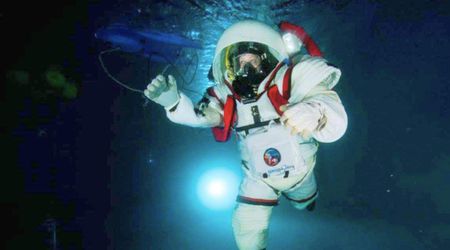NASA's oldest-serving astronaut returned to Earth after 220 days and he marked it with a special milestone

The oldest serving U.S. astronaut of NASA, Don Pettit, returned to Earth after completing a 7-month mission, as per NASA. He spent the mission with Roscosmos cosmonauts Alexey Ovchinin and Ivan Vagner. They left the space station at 5:57 p.m. EDT onboard the Soyuz MS-26 spacecraft and had a parachute-assisted landing at 9:20 p.m. Their return marked the 70th birthday of the long-serving astronaut who finished a seven-month mission on his fourth expedition to space.

Pettit, Ovchinin, and Vagner left for the mission and docked on the space station on September 11, 2024. Pettit's area of focus in the space laboratory was to carry out research to advance in-orbit metal 3D printing proficiency. The idea behind the research was the enhancement of technologies in water sanitation, and to test the growth of plants under varied water conditions. His research, though, wasn't limited to just that, having also conducted multiple experiments in microgravity. One of them was to analyze how fire behaved under such conditions. He also spent time clicking pictures in the space environment.

Pettit and his crewmates were in space for 220 days and finished 3,520 orbits around the Earth, which was 93.3 million miles. Once Pettit and his crew are done readjusting to gravity, the astronaut will be flown to Houston in Texas. The cosmonauts Ovchinin and Vagner will be sent to Russia's main space training base in Zvyozdniy Gorodok near Moscow, as per the BBC. Their departure from the space station transferred the vessel’s command to Japanese astronaut Takuya Onishi. Pettit served as a flight engineer for Expeditions 71 and 72 aboard the space station.

Throughout his entire career, Petit logged a total of 590 days in orbit while Ovchinin completed 595 days in four missions. Vagner had a grand total of 416 days from completing two spaceflight missions. As the astronauts landed southeast of Dzhezkazgan, Kazakhstan, the crew was present to receive them with the usual medical requirements. Pettit was reportedly doing good and was informed about his flight to the agency’s Johnson Space Center in Houston. We can also expect Pettit and his crew to share the details of their experiments or any useful conclusions they may have found.

The most recent landing of a similar nature was the return of NASA astronauts Butch Wilmore and Suni Williams. They returned to Earth on board a SpaceX Crew Dragon capsule after the malfunction of Boeing's Starliner spacecraft. These astronauts were ‘stranded’ in space for an extended period of nine months, when they were only scheduled for a week. The SpaceX capsule splashed down in the Gulf of America waters, whereas the Soyuz MS-26 spacecraft returned to land. Pettit and his crewmates received the same post-landing care to regain their strength.
The International Space Station has been housing people continuously for more than 20 years as they worked for science. The studies conducted in space enhance existing scientific knowledge, as the research was a step forward into the unknown. These were impossible on the surface of the planet. The space station is a test site that trains experts for long-duration spaceflight and furthers commercial flights in lower orbits. NASA has its focus on various deep space missions, and its resources are centered on these flights, first to the Moon and, following closely, a trip to Mars.









